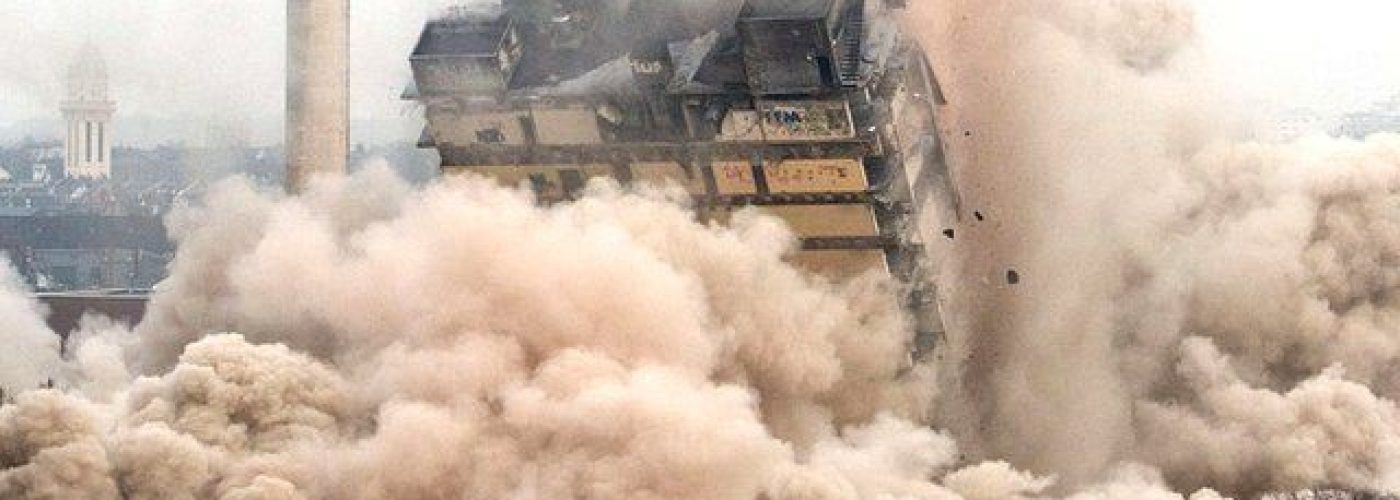If you have a commercial property that needs to be removed to make way for a new construction project – or if you are selling the land and need to ensure that the building does not remain in place, demolition is a popular option. Demolition is a huge task with a huge array of issues that need to be considered and accounted for.
Everyone involved in a demolition needs to understand how the project is going to be managed, what is going to happen, and what is expected of them. Safety and efficiency are absolutely essential, so it is vital to understand the relevant steps that need to be taken to manage it properly.
Here we take a look at how to prepare your commercial property for demolition.
Work with specialists
The first thing to say is that each demolition is unique and will have specific needs and restrictions. It’s a great idea to work with demolitions specialists who have taken on similar projects, and understand what needs to be done.
Given the inherent risks and dangers associated with demolition, you must put in place every possible precaution to keep workers and the public safe. Working with professionals who have been entrusted with similar projects in the past can give you the peace of mind that you are following the correct procedures.
Communicate with everyone involved
A crucial part of a successful demolition is clear communication throughout. Misunderstandings and assumptions can leave essential tasks unfinished, and people in the wrong place at the wrong time – these are the last things that you want during a demolition.
Ensure that everyone involved uses all of the same lines of communication throughout the process. It can also help to schedule regular meetings with the key people who can then pass on the information to those who need it.
Communication is also important for the perspective of liaising with relevant authorities regarding the matters of demolition. Local authorities, owners of adjacent properties and anyone else who might be affected need to be contacted, and a plan developed around their needs.
Conduct relevant surveys
Having surveys carried out is a legal obligation with demolition work. These surveys look at the building and demolition plan to find any risks that could affect the project. The first and most important survey is known as an R&D (or, Refurbishment and Demolition) and was previously known by the name Type 3 asbestos survey.
This survey uses ‘intrusive and destructive methods to allow (the surveyor) to gain access to difficult-to-reach areas such as roof voids, wall interiors, solid floors and under crofts’ in order to establish whether any asbestos is present in the building. If this is the case, it would need to be removed before demolition can take place.
You also need to have a dilapidation survey to assess the condition of the structure. This type of survey gives you a good understanding of any existing damage or existing concerns that could affect the demolition.
Consider deconstruction as an alternative
The method of deconstruction is more expensive than a traditional demolition – but that hasn’t stopped it from becoming a popular alternative for some property owners. There are a number of reasons that some are opting for deconstruction – not least because it hugely reduces the risks and dangers involved.
Additionally, it is the case that some of the cost of deconstruction can be recouped by selling the materials after the work has been completed. In a deconstruction, parts of the building are taken apart one at a time. It has the potential to be more environmentally friendly too – as materials are able to be reused rather than destroyed.
It’s not the right choice for everyone, but it is worth considering.
Final thoughts
Carrying out a demolition project means following health and safety laws closely and doing everything by the book. Carrying out a safety assessment is your first step, before moving on to actually planning the demolition and ensuring everything runs smoothly on the day.
Work directly with contractors who you trust and that can show you the credentials and experience of carrying out similar demolition works in the past. Getting it wrong can not only be extremely costly and time-consuming but can also put people at risk and leave you liable.





